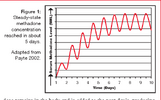My opinion (haven’t done a pump since fellowship about 5 years ago, but in fellowship did a lot):
A pump is probably not great for truly generalized pain but can still help. Choosing a more hydrophilic opiate will help it spread farther and cover a broader area. If you’re talking generalized pain due to mets everywhere, you can hopefully cover the worst area. Have to ask how long they have and whether pump is justified though. Generalized pain because their oncologist has escalated them up and up and now they’re on a 500 OME a day and have OIH? Also surprisingly might help because you cut the dose down by about 100-fold especially if you can replace some opioid with local. I saw a couple patients with pancreatic cancer who were a real mess prior to the pump get a lot of QOL back.
Au bon pain is spot on though. It takes a lot to serve those patients well. You need a smooth pipeline from the cancer center to you, to the OR, to pump refills. These aren’t people who can wait a month to see you, another month for a trial (not sure if they do those for cancer pumps still - sometimes we were able to bypass a trial?) and then another month for the implant. Pumps were almost the only reason I had to go in on the weekend.
I wouldn’t want to have to set all that up.



